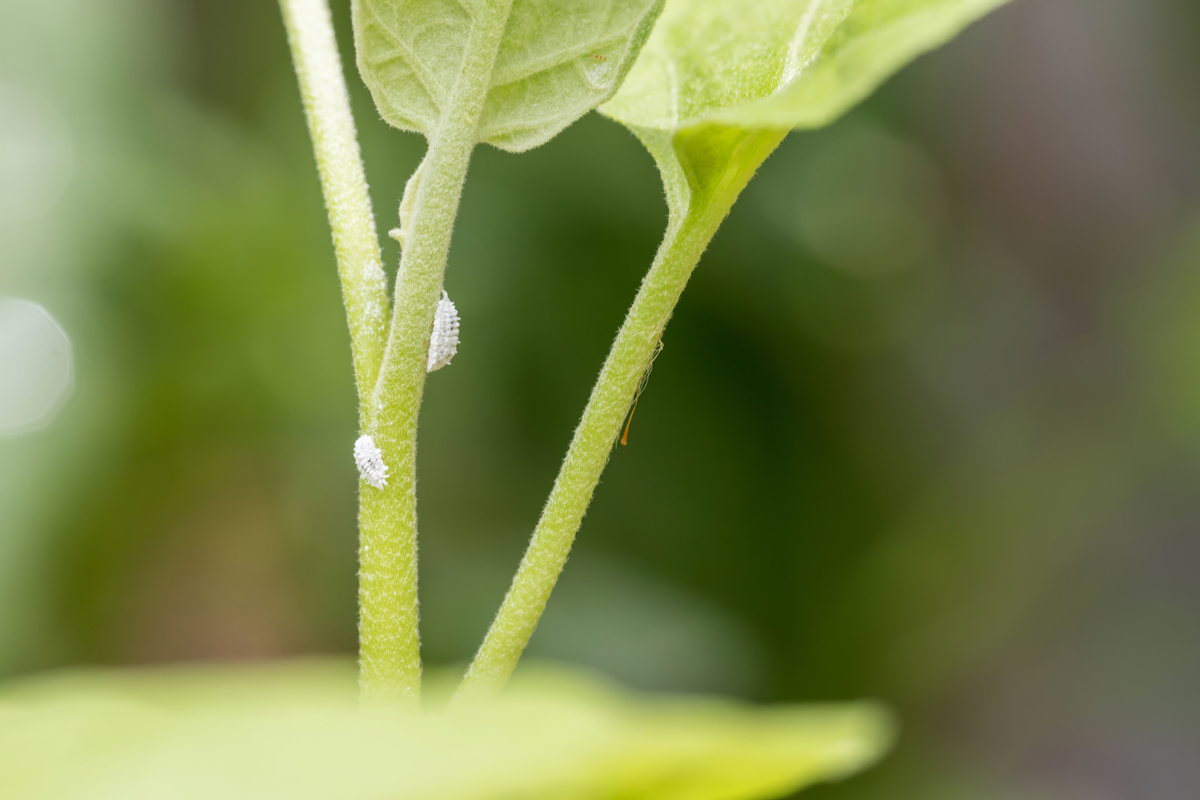
Pests are not as common a problem in indoor gardens as they are outdoors. However, that doesn’t mean they should be ignored either.
There are several common indoor pests that attack most tropical houseplants, feeding on foliage and stems until nothing is left. One of those is mealybug.
If you’ve ever noticed a white fluffy substance around the leaves and stems of your houseplants, you’ve got a mealybug problem on your hands. Luckily, they are not too damaging if caught early and are generally easy to remove.
Follow this step-by-step guide to identifying and removing mealybugs on houseplants and make sure you take a look at the preventative tips to limit your risk of infestation in the future.
What Are Mealybugs?
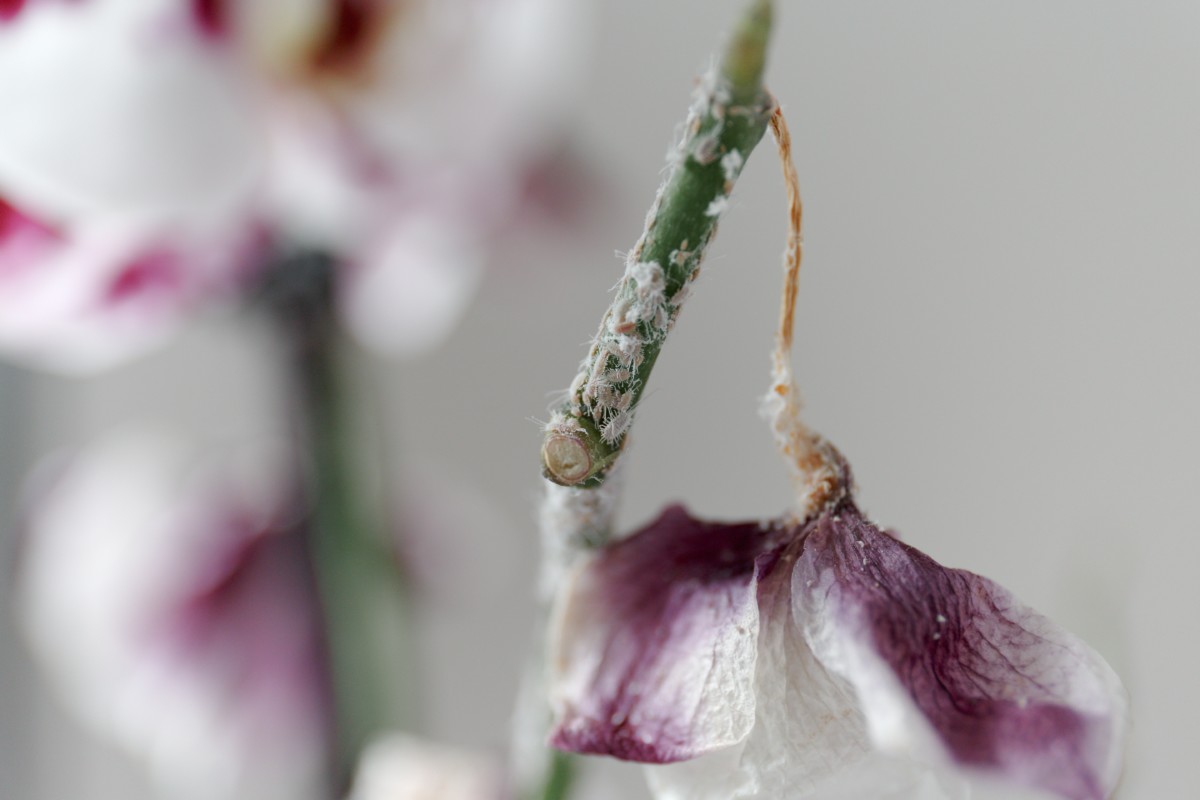
To get technical, mealybugs are scale insects in the Pseudococcidae family. They are part of the same suborder (Sternorrhyncha) as other sap-sucking insects like aphids and whiteflies. But, all you need to know about them is that they can be incredibly damaging to your houseplants.
Once a female mealybug makes its way to one of your plants, it finds a cozy crevice and settles in. You can often find them on the stems, hiding in the gaps between leaves or on the undersides of the foliage.
When they’ve settled in, the damage really begins. These bugs attach themselves to various parts of the plant and begin to secrete a waxy white substance to protect themselves while they feed on your plants. Sinking their ‘teeth’ in, they slowly suck the juices from your plants, causing them to become deformed and impairing their internal water and nutrient transport systems.
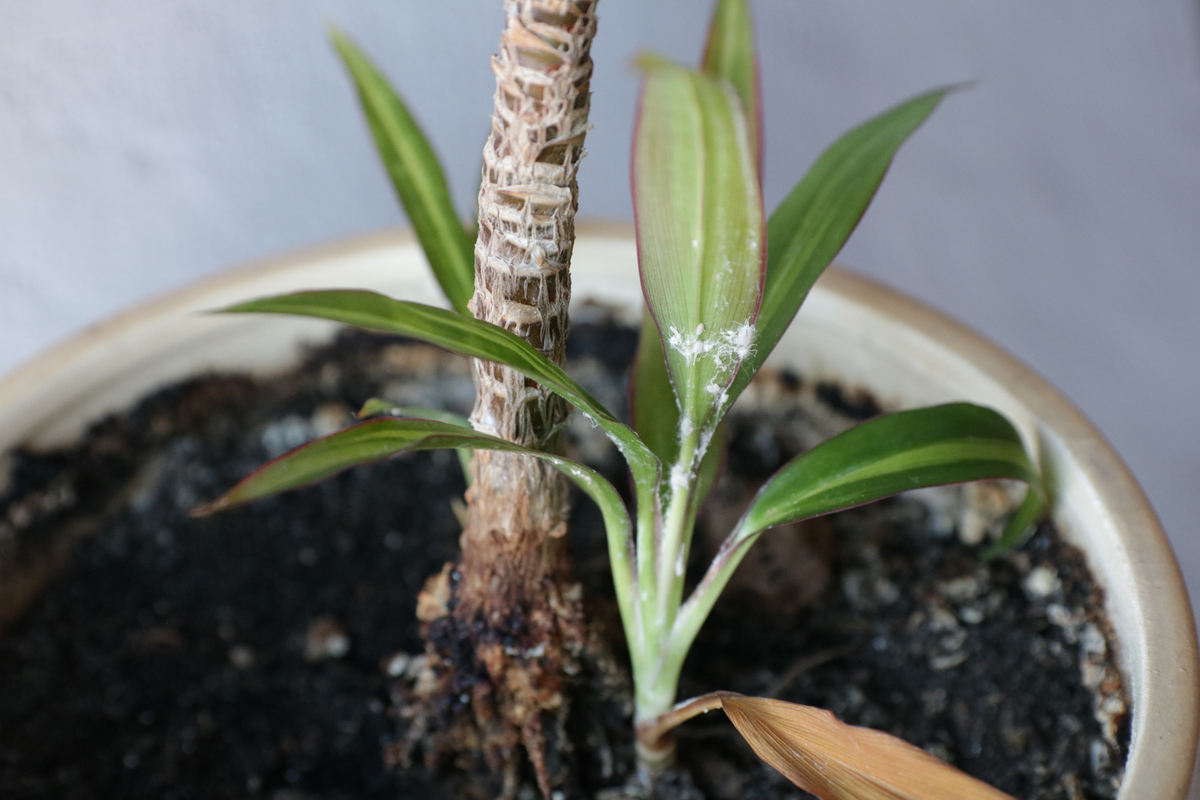
If they are not tackled soon, these pests may also lay eggs in this white waxy layer – potentially as many as 100. Unfortunately, these eggs hatch incredibly quickly, usually in as little as two weeks. Within another two months, all these tiny mealybugs will be fully grown and capable of laying even more eggs, spreading exponentially.
But that’s not the only concern. Some mealybug species (of which there are many) attract ants due to the honeydew they excrete. In return, the ants protect them from predators, creating a symbiotic relationship. While the ants won’t really harm your houseplants, they aren’t great to have in your home either.
How To Identify Them
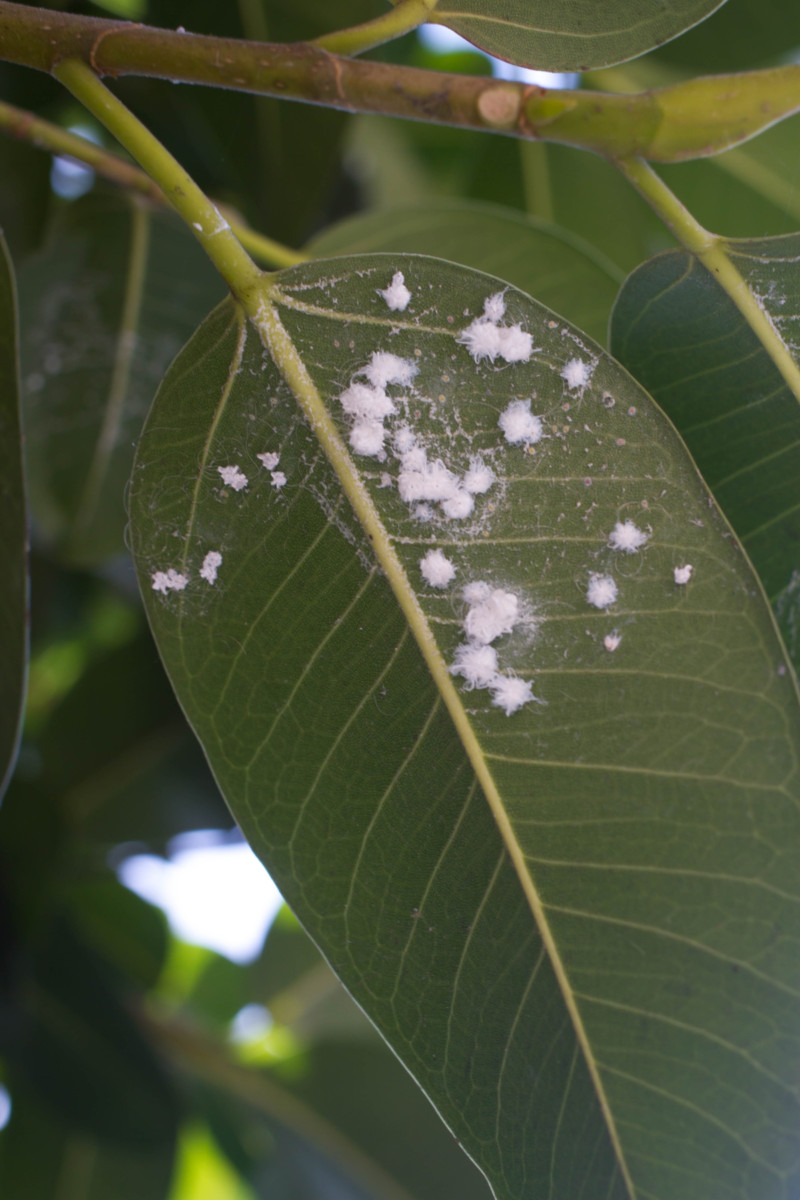
Despite that shiver-inducing description, there is some good news. Mealybugs are one of the easiest houseplant pests to identify. Unlike smaller pests that are incredibly good at hiding out and staying out of sight due to their size or color, mealybugs are easily spotted by the white waxy substance they release.
This substance has a fluffy texture and generally collects wherever the bugs settle. If you look closely, you will see small white or almost translucent bugs moving around near this white fluff. Over time, it will build up as the infestation intensifies.
The substance the mealybugs secrete after feeding on your plants will draw any nearby ants, so keep an eye out if you notice them crawling around your houseplants. You may also notice sooty mold developing on the leaves that make them appear dirty and can lead to stunted growth.
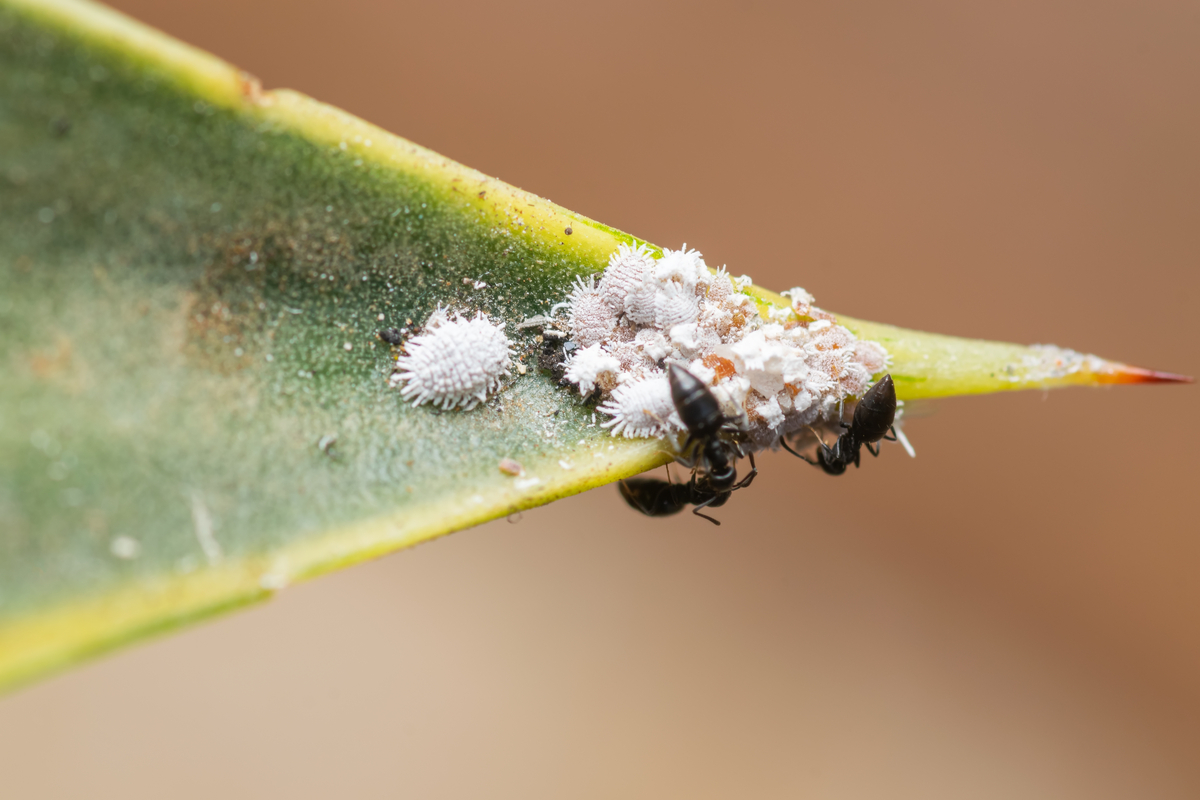
The first identifying sign is certainly these white spots. But, you can also pick up the problem through the damage they cause. These problems develop slowly over time, but will get worse if the pests are not dealt with:
- Yellowing spots on leaves
- Entire leaves yellowing
- Wilting and leaf drop
- Deformed leaves and stems
Mealybugs can be brought in from almost anywhere. They may have found their homes in the nursery before you bought the plant or if your houseplants were ever placed outside. They can even be brought in from vegetables harvested from the garden.
No matter where they came from, it’s important to tackle the problem as soon as you spot it to avoid any long-lasting damage or worse, the untimely demise of your houseplants.
How To Remove Mealybugs From Houseplants
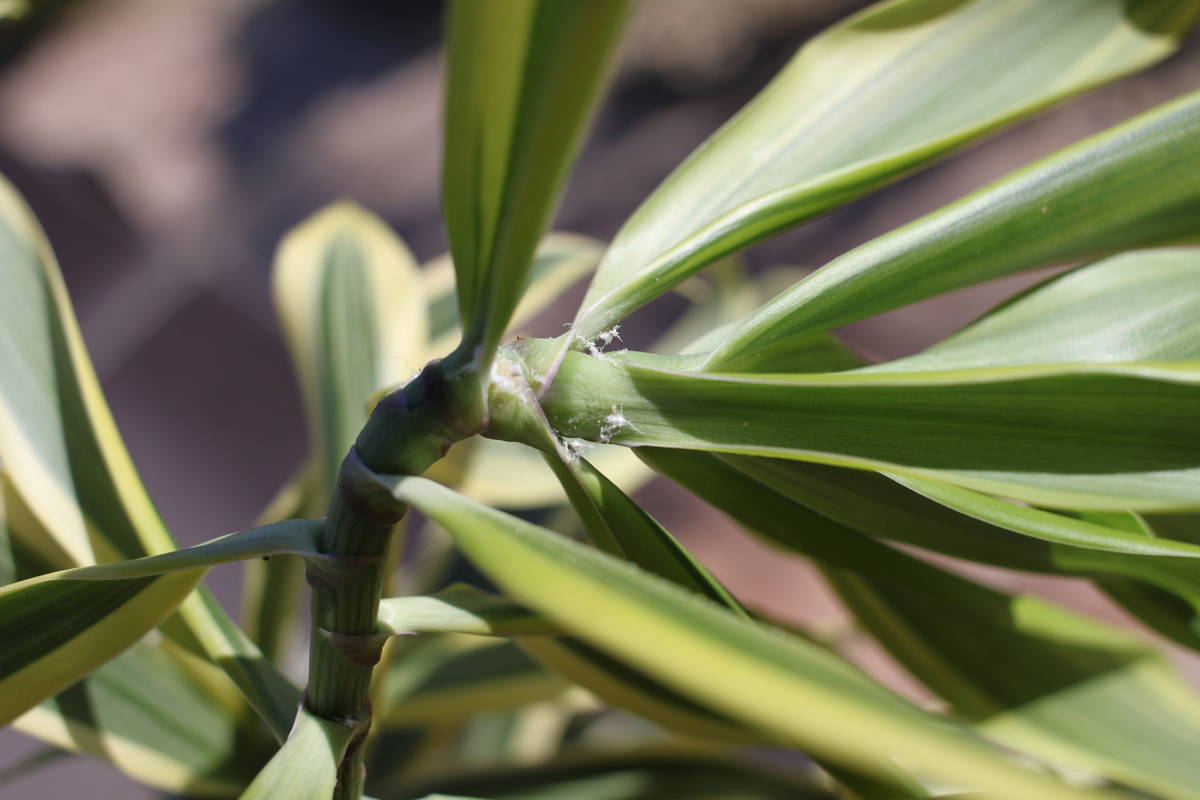
When you’ve identified a mealybug problem, the first thing to do is not panic. Pests can be frustrating problems, but they’re not the end of the world. Whatever you do, don’t throw out your plant either without trying to remove them first. Follow these steps diligently and you should be able to remove the problem for good.
Quarantine
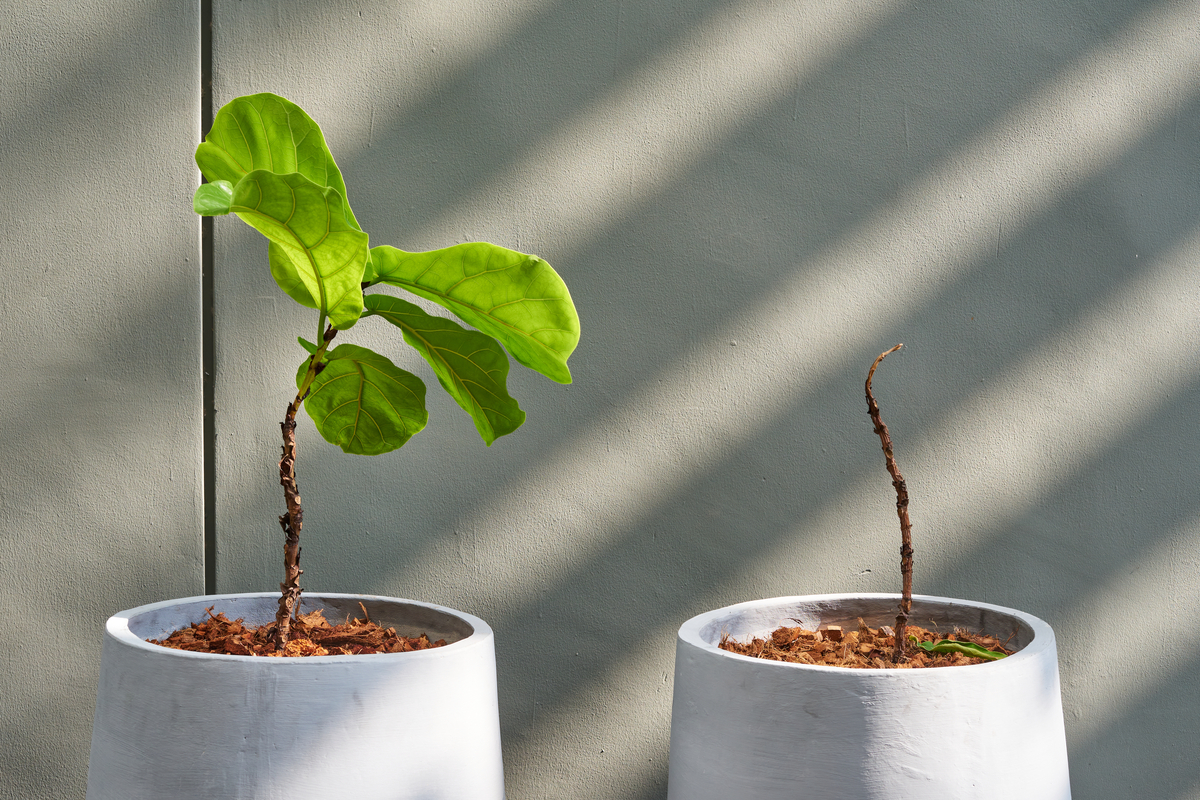
As soon as you spot mealybugs on any of your houseplants, make sure you isolate that plant and preferably move them outdoors if possible. While mealybug doesn’t spread very quickly, if you have a lot of houseplants or two close together it is sure to spread, only doubling your problem.
If you can put them outside, make sure they remain out of direct sun and cold temperatures. Even a few hours of intense direct sun when your plants are not used to it can lead to far more problems. Cold temperatures are also damaging, causing the leaves to curl and turn black.
Those without outdoor space should opt to keep them in a separate room and far away from any other houseplants.
Prune
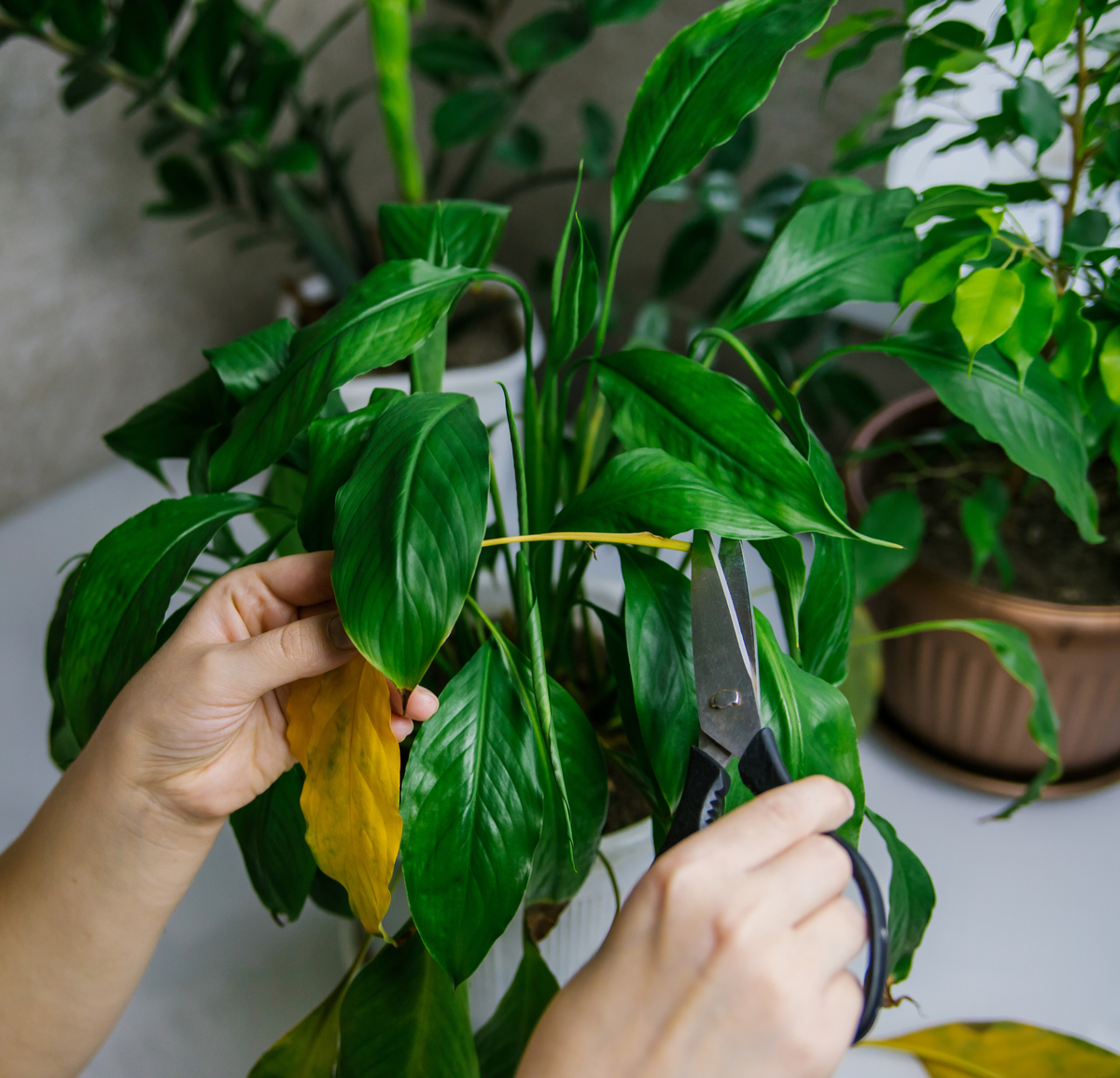
For concentrated or less severe infestations, a simple prune may be enough to get rid of these bugs. The ability to prune will, however, depend on the plant you have. For example, vines like Pothos can be trimmed quite easily without causing too much damage, while smaller houseplants with few leaves can go into shock with excessive pruning.
If the bugs are present in more than one area, it is likely they have spread to areas you cannot see as well, including the soil. In these cases, it’s best to skip pruning to avoid shock and head straight to the next step.
Wash
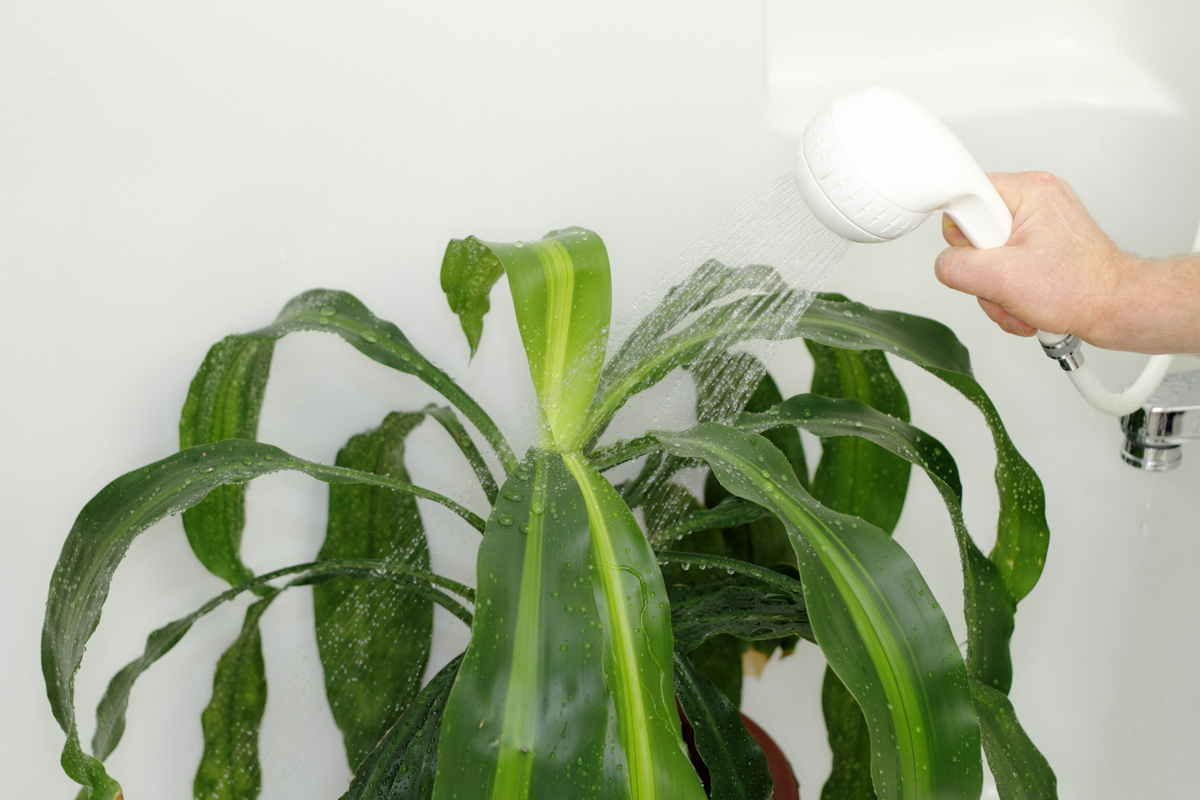
Next, grab your plant and move it into your sink or bath. Then, simply give all parts of the plant a thorough rinse. If you have an outdoor space, you can also use a hose to do this. The water stream should have enough pressure to wash off some of the bugs in open areas.
The more bugs you remove at this step, the easier the next ones will be. Make sure you cover all the leaves, top and bottom, and get in between the stems. If you have a more delicate plant, use a gentler setting or wipe the bugs off with a cloth instead to stop any leaves from dropping.
Spot Removal
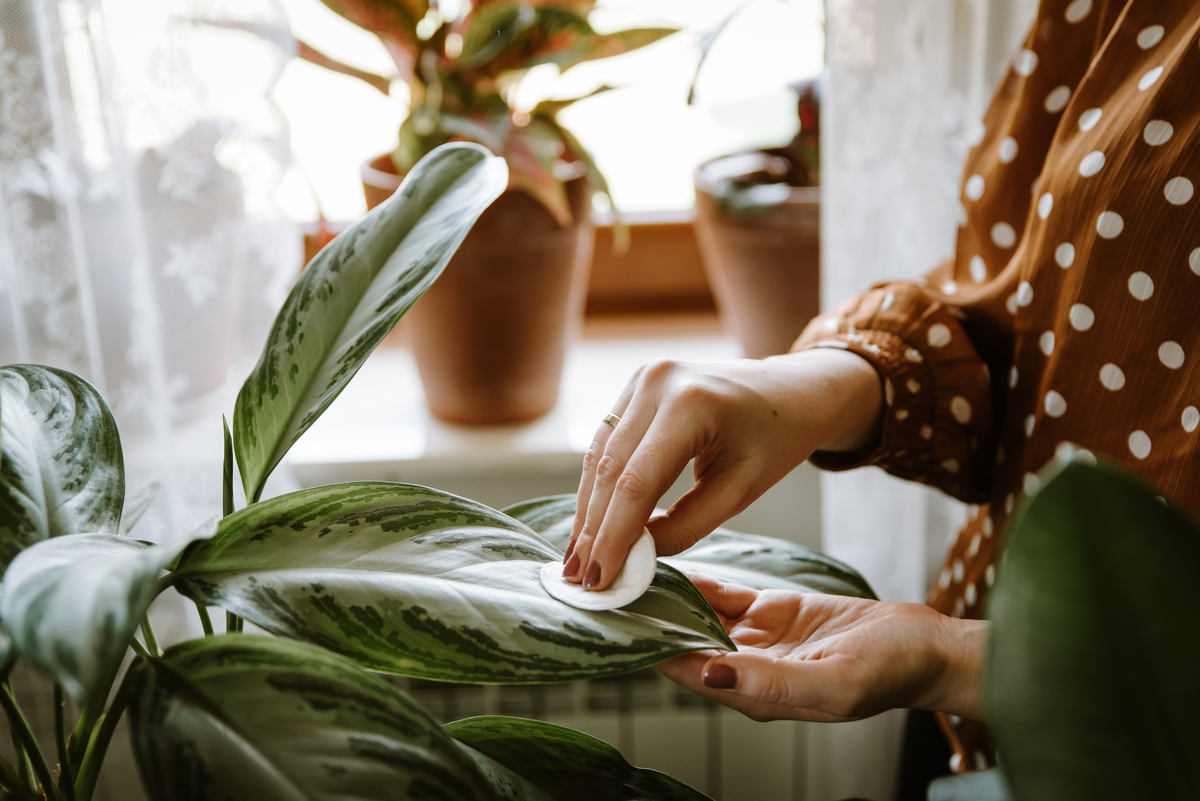
Once most of the plant has been cleaned, you can start the process of spot removal. Since washing will not get rid of all the bugs, you need to go in armed with a cotton swab and some rubbing alcohol to get the rest.
Dip the end of the swab or a cloth into the rubbing alcohol and cover any mealybugs you see. The swab is easiest for this process as it allows you to get into those small and tough-to-reach corners of the plant. If there is enough alcohol present, the bugs will be killed instantly as soon as you touch them.
Once you think you’ve got them all, rinse the plant again to wash off the bugs and any excess alcohol. Continue to spot remove every couple of days as more bugs come out of the woodwork.
Spray
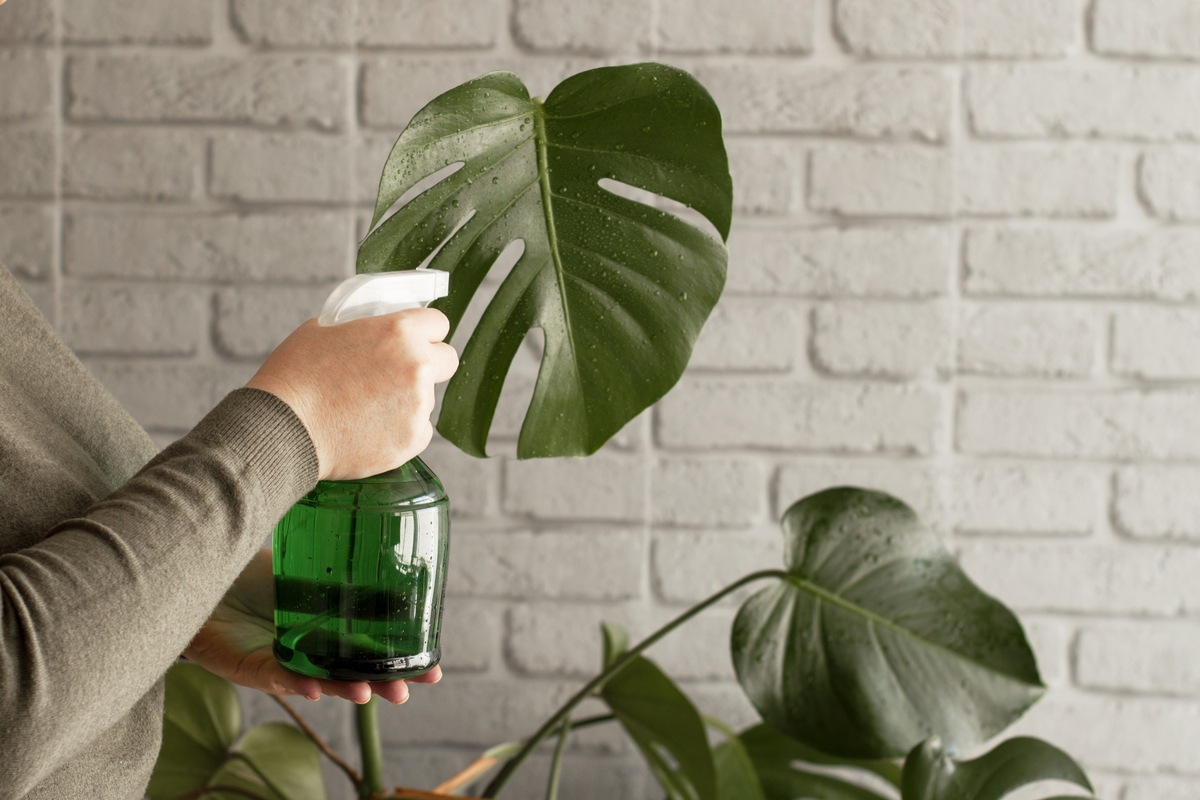
Unfortunately, even if you are meticulous with your bug removal, you’re likely to miss a few. That’s where this next step comes in. Spraying with insecticidal soap or horticultural oil will not only aid in getting rid of those last few mealybugs, but it will also make them less likely to appear again in the future.
Insecticidal soaps to target mealybug should be available at your local nursery or online. You can also make your own using dish soap and water, but it may not be as effective as targeted sprays. Horticultural oils like neem oil are also useful. Simply dilute according to packaging instructions before applying.
Follow Up
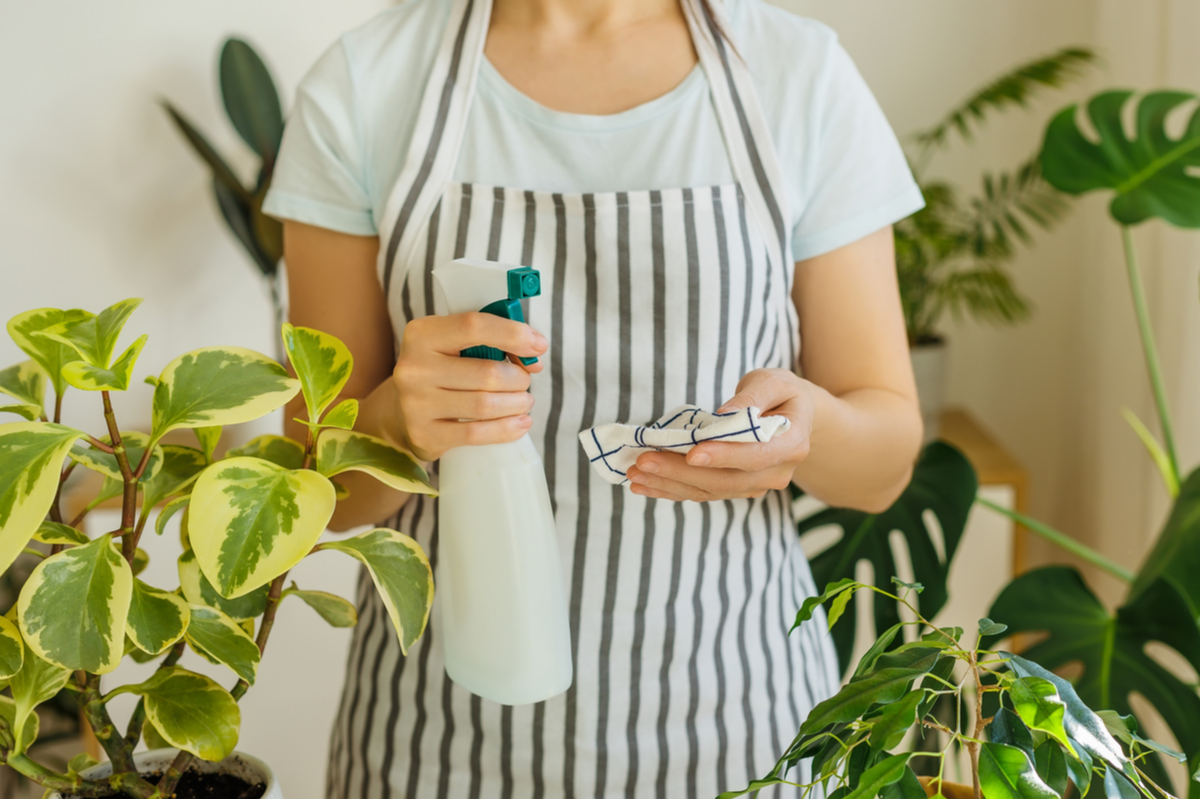
Once you’ve gone through this entire process once, don’t think your job is done. Follow-up is essential to stop the problem from occurring again. Even a few mealybugs left behind in dark corners can completely take over the plant again in a couple of months.
Repeat the process every few days or weeks, depending on how the plant looks. Keep a close eye out for any more signs not only on that plant, but all your other houseplants, in case the problem has already spread.
After a few rounds of treatment, the bugs should be gone. If you keep trying and nothing seems to work, your only other option will be to discard the plant. But, if you follow these steps carefully, the issues are unlikely to ever get to that point.
Mealybug Prevention Tips
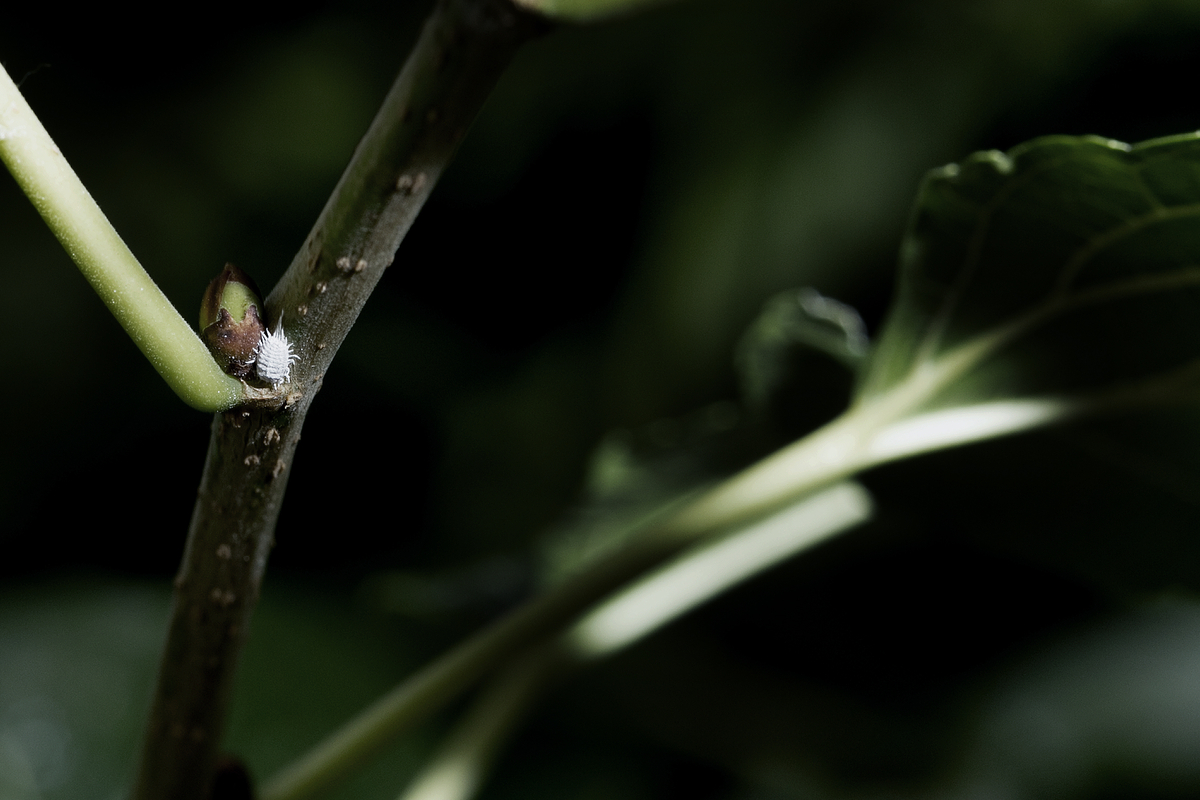
As mealybugs can come from anywhere, there is no foolproof way to keep them from infesting your houseplants. However, there are some steps you can take to minimize your risk:
- Repot if you suspect any mealybug infestations in the potting soil.
- Wash any vegetables and fruits from the garden thoroughly before bringing them indoors.
- Avoid leaving your houseplants outdoors for long periods of time.
- Wash old pots and tools before repotting to remove any potential bugs.
With these tips and a step-by-step plan to tackle them, you shouldn’t worry about any future mealybug infestations on your houseplants.

Get the famous Rural Sprout newsletter delivered to your inbox.
Join the 50,000+ gardeners who get timely gardening tutorials, tips and tasks delivered direct to their inbox.

